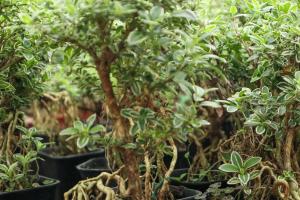What to Do When Your Tomato Plant Outgrows Its Cage
Tomato plants are popular choices for home gardens due to their versatility and relatively easy maintenance. However, when left untended, tomato plants can quickly grow out of control and become unruly. This can cause problems such as a lack of support for the stem, which can lead to breakage and a plethora of pest issues. One of the most common methods of controlling the growth of tomato plants is through caging. But what happens when the tomato plant outgrows its cage?
Assessing the Situation
The first thing to do when you notice that your tomato plant has outgrown its cage is to assess the situation. Go out to your garden and observe the plant carefully. Look for signs of stress such as wilting, yellowing leaves or any other signs of disease. Also, check the stem for any damage or weakness. This is crucial since tomato plants are known to be heavy feeders and can cause the cage to collapse if the stem has been weakened due to lack of support.
Caging Options
If your tomato plant is outgrowing its cage, it's time to consider some other options. There are several caging options available that can provide more support for your tomato plant:
Sturdy Cages: If you are using a flimsy or small cage to support your tomato plant, consider upgrading to a more sturdy and robust cage. These cages are usually made of metal and provide a strong support system for the plant. They are also available in various sizes that can cater to the height and width of your plant.
Trellising: Trellising is another popular method of supporting tomato plants. It involves tying the plant to a vertical pole or stake using twine or clips. You can also use a trellis netting to support the plant. This method not only provides support but also helps to keep the plant upright and off the ground, which can help to prevent diseases and pests.
Cage Extensions: If you have a sturdy cage that's still not tall enough for your plant, consider attaching a cage extension to it. These extensions are available in different sizes and can be easily attached to your existing cage. They provide extra support to your plant's height without taking up any additional space in your garden.
Pruning Your Plant
If you've assessed the situation and determined that your tomato plant is healthy and simply outgrown its cage, then it may be time to prune it. Pruning is a process of removing the excessive leaves and stems from the plant. This can help to redirect energy to the fruit, which will help it grow bigger and healthier.
To prune your plant, identify the branches and leaves that are growing beyond the cage. Use gardening shears to cut the branches and leaves back to the stem. However, be careful not to remove too much foliage, as this can also negatively affect the plant's growth.
Conclusion
Tomato plants are excellent additions to any garden, but they can quickly become unruly if not properly supported. If your tomato plant has outgrown its cage, assess the situation, and consider one of the caging options discussed in this article.
If your plant is healthy, pruning can also help to redirect energy to the fruit. No matter which method you choose, remember to check your plant regularly for signs of stress or disease, and take action when necessary.

 how many times do yo...
how many times do yo... how many planted tre...
how many planted tre... how many pine trees ...
how many pine trees ... how many pecan trees...
how many pecan trees... how many plants comp...
how many plants comp... how many plants can ...
how many plants can ... how many plants and ...
how many plants and ... how many pepper plan...
how many pepper plan...






























